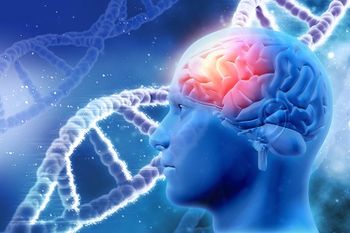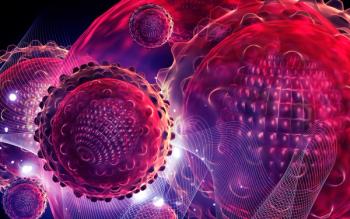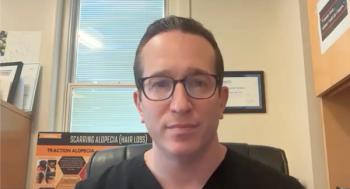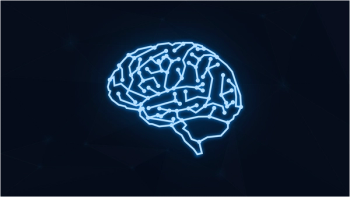
Novel CAR T Therapy Yields Safety, Responses in R/R Multiple Myeloma
GCF012F may show promising activity in relapsed and refractory multiple myeloma, according to an expert from Shanghai Chang Zheng Hospital.
The investigational GC012F demonstrated deep and durable responses and was well tolerated in patients with relapsed/refractory multiple myeloma, according to findings from a phase 1 trial (NCT04182581; NCT04236011) at the
Among 29 evaluable patients at the April 12, 2023, data cutoff, safety findings were consistent with previous data for GC012F. Grade 1 cytokine release syndrome (CRS) was observed in 48% of patients, grade 2 CRS occurred in 31%, grade 3 CRS was reported in 7%, and no instances of grade 4 or 5 CRS occurred. Notably, no instances of immune effector cell–associated neurotoxicity syndrome were reported. The median time to onset of CRS was 6 days (range, 2-10), and the median duration of CRS was 3 days (range, 1-8).
Regarding efficacy, at a median follow-up of 30.7 months (range, 1.9-45.6), GC012F generated an overall response rate (ORR) of 93.1% of patients (n = 27/29). Additionally, 82.8% of patients achieved minimal residual disease (MRD) negativity and a stringent complete response (sCR), and 89.6% of patients experienced a very good partial response (VGPR) or better. The median time to best response was 3 months (range, 0.9-15.3), and the median duration of response was 37.0 months (95% CI; 11.0–not reached).
“GC012F shows very promising activity in relapsed and refractory multiple myeloma, including high-risk and heavily pretreated patients,” Wanting Qiang, MD, of Shanghai Chang Zheng Hospital in Shanghai, China, said in a presentation of the data.
BCMA is a known target in the treatment of multiple myeloma, and CD19 is expressed on the majority of multiple myeloma cells. Notably, CD19 is also expressed in subsets of progenitor cells, which comprise a drug-resistant, colony-forming cell reservoir.
“Synergy of anti-CD19 and anti-BCMA CARs have been demonstrated in our preclinical studies, showing effective killing of BCMA and CD19-positive tumor cells, and more effective elimination of progenitor cells,” Qiang expanded. “Therefore, targeting both entities to maximize the elimination of myeloma plasma cells and CD19-positive progenitor cells [could] drive deep and durable responses.”
Previous data from the phase 1 study presented at the 2022 ASCO Annual Meeting showed that treatment with GC012F led to an ORR of 89.3% (n = 25/28).2 Seventy-five percent of patients achieved a MRD-negative CR/sCR, and 86% of patients had a VGPR or better. The CAR T-cell therapy was found to be tolerable, with 82% of patients experiencing grade 1/2 CRS and 7% encountering grade 3 CRS.
Unlike conventional CAR T-cell therapy, where activation, transduction, and ex vivo expansion takes 1 to 5 weeks following apheresis and isolation, activation and transduction of GC012F through the FasTCAR platform occurs concurrently over a period of 22 to 36 hours. Expansion happens in a patient’s body, which is the optimal condition.
“[FasTCAR] was designed to overcome the challenges with conventional CAR T-cell therapies, one of which is the lengthy wait time between apheresis and infusion for patients, which puts them at risk of disease progression. Another potential advantage of FasTCAR manufacturing is enhanced T-cell quality with less exhausted T cells,” Qiang said.
The multicenter, open label, single-arm, investigator-initiated study enrolled patients with relapsed/refractory multiple myeloma who were previously treated with 3 or more prior lines of therapy and/or were refractory to proteasome inhibitors and immunomodulatory drugs (IMiDs). A life expectancy of 3 months or months was required.
Patients were treated with 1 of 3 dose levels of GC012F: 1 x 105 cells/kg, 2 x 105 cells/kg, or 3 x 105 cells/kg. Following apheresis and manufacturing of GC012F, patients underwent lymphodepletion on days –5 to –3 with 30 mg/m2 of fludarabine and 300 mg/m2 of cyclophosphamide per day. GC012F was given as a single infusion on day 0.
The primary end point of the trial was adverse effects (AEs). Secondary end points included ORR, best overall response, MRD status throughout prespecified time points post-infusion, and pharmacokinetics (PF) and pharmacodynamics (PD).
Patients had a median age of 57 years (range, 27-76) and the majority of patients (59%) were male. Moreover, 45% of patients had immunoglobulin G (IgG) multiple myeloma, 21% had IgA, 18% had IgD, and 18% had light chain. The median time since diagnosis was 4 years (range, 1-10).
“Notably, 90% of the patients evaluated [showed] a high-risk profile, according to mSMART 3.0 criteria, 10% [had] double-hit [disease], and 28% [had] extramedullary plasmacytoma,” Qiang said.
Patients received a median of 5 (range, 2-9) prior lines of therapy and a median of 5 (range, 2-11) prior regimens. Additionally, 38% of patients previously received autologous stem cell transplant.
Ninety-seven percent of patients were triple-class exposed, 93% were proteasome inhibitor refractory, 93% were IMiD refractory, and 34% were anti-CD38 refractory. Furthermore, 62% of patients were penta-drug exposed, 10% were primary refractory, and 83% were refractory to their last therapy.
Additional data demonstrated that the median progression-free survival (PFS) across all patients was 38.0 months (95% CI, 11.8–not estimable [NE]) with a 12-month PFS rate of 69.0% and a 36-month PFS rate of 50.5%. The PFS for patients who achieved an sCR was 38.0 months (95% CI, 13.7-NE) with an 83.3% 12-month PFS rate and a 61.0% 36-month PFS rate. Additionally, the median PFS for patients who achieved either 12-month sustained MRD negativity (n = 10) or 12-month sustained MRD-negative CR (n = 10) was NE (95% CI, 38.0-NE), and the 12- and 36-month PFS rates were 100% for both groups.
The MRD landmark analysis showed that 100% of patients achieved MRD negativity. Notably, 100% of patients assessed by Euroflow at sensitivity of 10-6 were MRD negative at month 6 (n = 15). Among 14 evaluable patients, 78.6% were MRD negative at month 12.
Hematologic treatment-emergent AEs (TEAEs) that occurred in at least 25% of patients were neutropenia (any-grade, 79%; grade ≥3, 79%), lymphopenia (66%; 66%), leukopenia (79%; 76%), thrombocytopenia (76%; 55%), and anemia (48%; 34%). Moreover, non-hematologic TEAEs included increased lactate dehydrogenase (any-grade, 62%; grade ≥3, 0%), hypoalbuminemia (48%; 0%), increased aspartate transaminase (41%; 29%), hypokalemia (66%; 14%), hypophosphatemia (31%; 0%), and hypocalcemia (24%; 3%).
PK/PD data showed that CAR T cells were still detectable at 6 months, pointing to sustained persistence the GC012F. Notably, no significant differences were observed for area under the curve days 0 to 28 between the 3 dose levels. Additionally, serum BCMA levels declined following infusion of GC012F, and the minimal median serum BCMA level was reached at month 2 following treatment.
“Based on these promising results of the study of GC012F for [patients with] relapsed/refractory multiple myeloma, further clinical studies will be conducted to confirm the efficacy of GC012F,” Qiang concluded.
References
- Du J, Fu W, Jiang H, et al. Updated results of a phase I, open-label study of BCMA/CD19 dual-targeting fast CAR-T GC012F for patients with relapsed/refractory multiple myeloma (RRMM). J Clin Oncol. 2023;41(suppl 16):8502. doi:10.1200/JCO.2023.41.16_suppl.8005.
- Du J, Jiang H, Dong B, et al. Updated results of a multicenter first-in-human study of BCMA/CD19 dual-targeting fast CAR-T GC012F for patients with relapsed/refractory multiple myeloma (RRMM). J Clin Oncol. 2022;40(suppl 16):8005. doi:10.1200/JCO.2022.40.16_suppl.8005
Newsletter
Stay up to date on recent advances in the multidisciplinary approach to cancer.

















































































